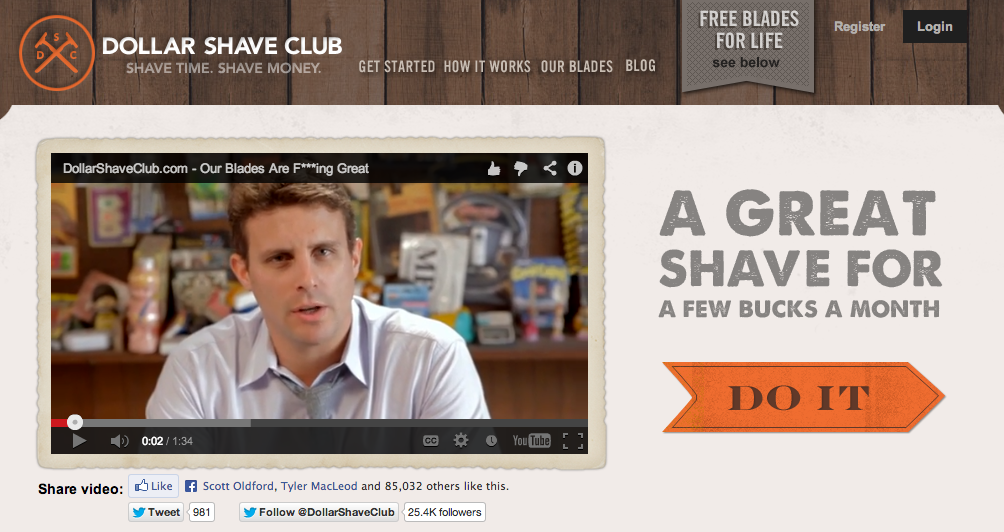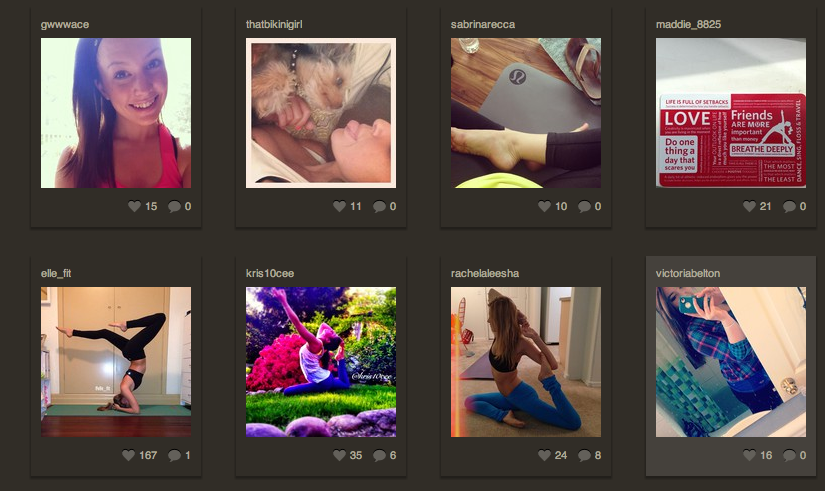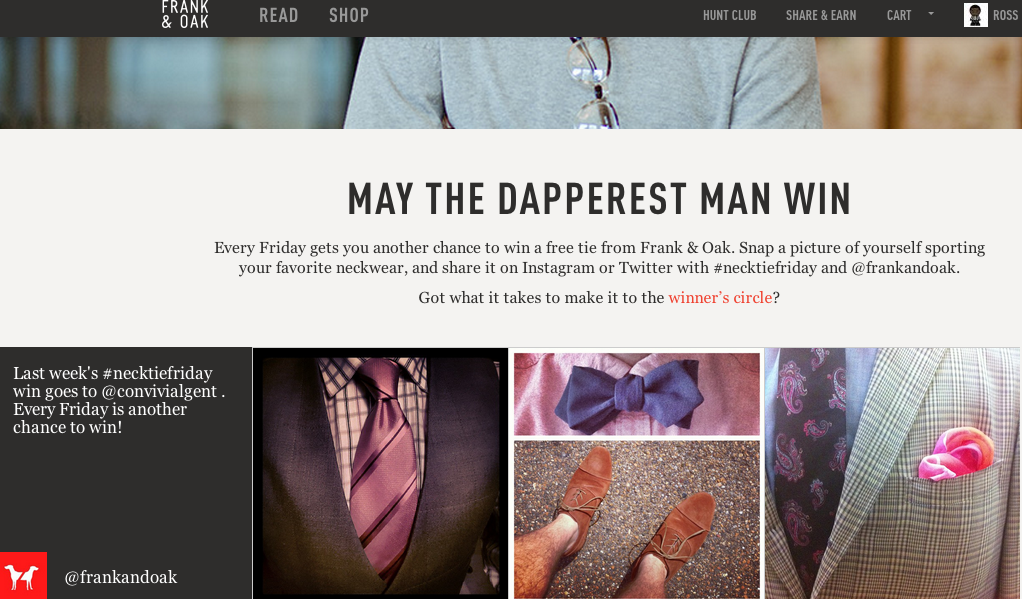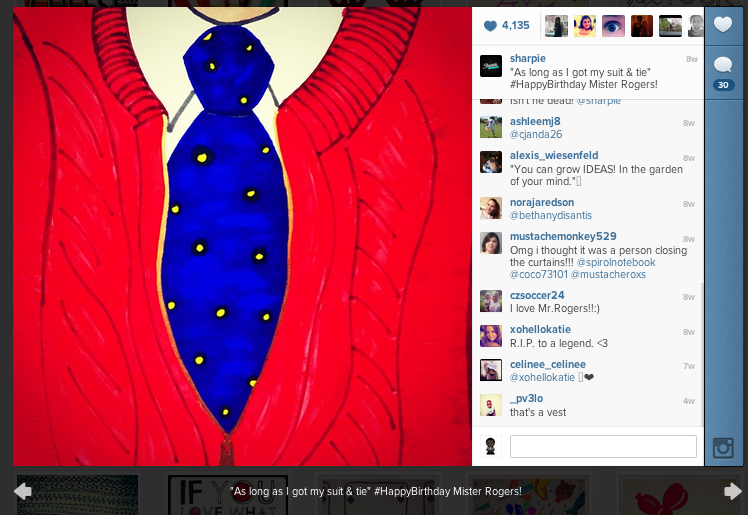Getting Generation-Y to like your product or think you’re cool is almost as difficult as getting a kid to stay keep their composure in a toy store. With millions of brands fighting for their attention, standing out in the boundless sea of brands and messages is becoming increasingly difficult.
The most effective marketers understand that communicating to this group starts in the same way that you would start when targeting others. The best marketers start their planning process by identifying and seeking out a compelling story that they feel will be well received by this audience.
When you think of Generation Y and the brands that have done a good job connecting with them, the one thing they have in common is a brand story. They strive to create an idea that’s bigger than their products and associate that story with everything they do. Whether it’s Redbull and their stance on being extreme or it’s Warby Parker and their ability to establish a grassroots feel. A compelling story is what differentiates the successful brands from those who simply blend in with the rest of the pack.
Once you’ve identified this story and are ready to connect with Generation Y there are a few things you should know and consider. These are some of the tactics and approaches that I’ve learned working with brands and studying brands striving to better connect with Generation Y. These strategies are sure to help you in not only building your relationship with Generation Y but also standing out in the crowd.
Let’s dig in.
Establish Content Excellence
Achieving content excellence is something that brands everywhere should strive to achieve. The concept is built on the idea of developing consistently compelling content across a variety of different channels. There are three types of content that you need to develop and influence to achieve content excellence:
Brand Developed Content: Whether it’s the development of a unique video or a rich blog post; content that is developed by a marketer or organization is brand developed content. The key goal of this content is to deliver your story in a compelling way. The intent here is to create brand content that is not only memorable but also worth sharing.
A brand that was very successful at connecting with Generation Y most recently was DollarShaveClub.com. To kick start their connection with Generation Y they developed a very grassroots-esque video staring the founder and his employees. The video is filled with a combination of off-side and knee slapping humour to ensure the message is worth sharing. Furthermore, the language used on their site is written in the vernacular of their target audience and the design is simple yet appropriate to their target audience.
User Generated Content: The hope with your brand developed content is to not only drive users to share but to also encourage users to create. When users create content that is associated with a brand, that content combines with the other stories out there to develop the overarching brand story. While marketers have no control over what content customers put out there they can most certainly influence it to ensure that the story is aligned with their messaging.
First, the brand needs to recognize that if they are selling a product, then the majority of the stories shared will typically be images or stories specifically highlighting a product interaction. For example, when Generation Y interacts with a product like LuluLemon pants, their fans run to let the world know about it. Whether they’re sharing pictures of themselves along with the LuLuLemon logo or sharing pictures of themselves doing Yoga poses; LuLuLemon has developed a tribe:
LuLuLemon is privileged to a brand story that has already been established and embraced by Generation Y. For some brands, their story is just beginning and they can’t just sit back and expect people to share their story every minute of everyday. One of my favourite up and coming brands is Frank&Oak. Self described as an online clothing shop for men who are looking for the extraordinary it’s a startup that is trying to change the way men shop. They specialize in quality fashion and have an amazing selection of neck-ties.
On Fridays, they tend to run a contest called #NecktieFridays where they encourage guys from all over the world to upload photos in their neckties for a chance to win a Frank & Oak tie. This is a type of user generated content that is directly influenced by the brand but done so in a unique, compelling way.
Media Developed Content:
As much as we like to believe that consumers control the conversation, it’s not actually true. In fact, the media plays a role in influencing our perceptions, beliefs and an even larger role in determining what stories are discussed at our dinner parties and lunch meetings with colleagues. Remember when the Harlem Shake meme went viral? Did you think it was just human interest that sent it in a frenzy? According to a many sources, the virality of the Harlem Shake was manufactured. This isn’t new and recognizing this presents you with another opportunity to connect with Generation Y.
Identify channels that your target audience is likely to visit and review the content their editors are publishing. Get a good sense of what their motives are for sharing different pieces of content and what characteristics are found in the various posts. For example, if you’re in the mens clothing industry and are targeting young professionals who read channels like GQ or Cool Material – your product pitch needs to value quality photography and design. If you’re a new app targeting eco-conscious females, channels like Good.is and TreeHugger might be up your ally – in this case, focus on the societal impact that you’re looking to achieve.
Ultimately, when looking to generate media content; you need to create a story worth talking about. You need to identify an angle and give them something that will spread. Strive to tell stories that invoke emotion from Generation Y and you will be able to stir up some buzz. Whether it’s anger, happiness, inspiration or nostalgia – the most powerful predictor of media success is how much emotion your story evokes.
Once you have an understanding of the types of content that you can spark to connect with Generation Y, you need to identify how to reach them. This is specifically focused around developing brand content that will spark sharing, conversations and awareness. Here are a few approaches to make that happen:
Embrace Visual Storytelling
Visuals have always been an easy way for brands to connect with an audience. The saying “A photo can speak 1000 words” is cliche but very true as it relates to delivering a compelling or complex message. Every day, thousands and thousands of photos are shared across a variety of social media channels. Everyday, people share images of the brands they use and love, while also sharing photos from day-to-day life.
With 67% of users being younger than 34 on Instagram, Gen Y is taking clearly taking over the platform. While Instagram is best-known for vintage-coloured photos of people’s coffee, cats, selfies and screenshots of the music they’re listening too, it has also been used as a marketing tool by small and large companies alike to share their brand story.
Instagram has attracted companies as big as Starbucks, Sharpie, Burberry, Nike and National Geographic – and some of them have really managed to push the envelope with how they use Instagram. As it relates to Generation Y, Instagram presents a great opportunity for brands to connect with them as they are shifting more of their time from other networks to the photo-sharing application. Brands who are creative can not only use images to further share their story with users but also inspire users to get in on the action and share content of their own.
A brand that you’re likely familiar with that is using instagram to connect with Generation Y is Sharpie. It’s the marker brand that we all grew up with and can remember rarely using but always including in our back to school shopping list. Sharpie fills its Instagram with fan-submitted, Sharpie-drawn pictures. The majority of the drawings are pretty impressive, especially this shot of Mr Rogers iconic cardigan and tie. Top it off with a Justin Timberlake and Jay-Z reference and you’ve got yourself a hit:
The trendy, hipster-esque eyewear company, Warby Parker has a small but rabid fanbase and its Instagram account shows off the glasses while maintaining it’s fresh and modern look. They do a great job of showing off their merchandise in a completely non-salesy way, while capturing the unique culture of their employees and their target audience within every single shot.
To take their efforts a bit further, they ran a Photo Walk on instagram that encouraged people to meet up and walk through the neighborhood snapping pictures with a Warby Parker hashtag. Nearly 700 photos were taking, twitter filled with great feedback and Warby Parker solidified itself as a leader as the media caught wave of their approach to social media.The event was a hit. Tickets sold out, 678 photos were snapped with the hashtag #WarbyWalk, and Twitter filled to the brim with radiant feedback (see below), creating an army of voluntary product endorsers.
Spark Emotions in Your Message
This is something that isn’t tailored specific to generation-y. In fact, this is something that can transcend from one generation to the next but is most powerful with Generation Y because their more active on social media than any other group. In a Wharton University study on what goes viral, the research concluded that: “Content that evokes emotions characterized by high arousal (i.e. awe, anger, and anxiety) is more likely to go viral.” Recognizing this, the best brands will strive to create content that ignites a series emotions from within their target audience (tweet this idea).
When creating content or ideas, marketers should strive to connect with their audience on an emotional level. Whether that’s by providing information that invokes awe—invoking a strong, positive emotion or informative articles that are controversial—but support your brand story; identifying these opportunities for success are key. It’s a challenge to strike a good balance when playing with emotions and for that reason, it’s a delicate tactic that should be used responsibly.
The key success factor in the Mr.Rogers visual used by Sharpie is the emotion associated with nostalgia. It’s an image plays on the emotions of Generation Y by taking them back to their childhood. Mr. Rogers has been known to go viral in the past with his auto-tuned song: Garden of Your Mind from the folks at PBS which also plays on Nostalgia. It’s one of the most powerful emotions a marketer can play with. Just take a look at what Internet Explorer did with their “Child of the 90’s” ad and how quickly it went viral:
Talk About The Good You Do
To be successful in business today, a company must do more than just sell a good product. According to a recent study in the New York Times, 80 percent of people are likely to switch brands, if comparable in price and quality, to one that supports a social cause.
Generation Y is a very socially driven group of people. Generation Y supports Warby Parker because they do business right. Not do they provide their customers with high quality frames at great prices but also give back to the community (tweet this idea). It’s a concept that really made strides when Tom Shoes came around and started pushing their idea of buy one-give one. It’s a simple concept but it’s one that this generation embraces and celebrates the brands that give back to the global and local community.No, I’m not literally talking about baking a cake. This is an analogy for the process of making products. Millennials are more interested in the process of, say, baking a cake, than in buying the cake. So what does this mean for businesses? There needs to be more transparency with their consumers. A behind-the-scenes view of designing the new J. Crew collection might be the push needed to get Millennials interested in the product. Millennials like the process more than the product.
Create Content From Experiences
According to an article from Forbes, 70% of Gen Ys favor great experiences over great products (tweet this stat). While generating content that is unique and interesting can build a brand relationship with a group of people; providing them with a once in a lifetime experience can make them fans for life.
Brands have always recognized the power of experiences but have never had an opportunity to see the spin-off return that is now possible due to social media. At one single event, there is a potential opportunity for those attending to share thousands of photos, videos, tweets and updates. In doing so, the brand is not only building a relationship with those at the event but also building a relationship with those watching from behind a computer screen.
Integrating branding and photo opportunities at events are an easy way to generate rich content from an experience. Generation Y is a group of people who walk around with cameras in their pocket just waiting for a chance to snap something worth sharing with their friends and family. Whether it’s a picture of a cup of coffee or a once in a life time experience that they want to have forever – making it easy for them to capture these experiences is a huge opportunity for long-term results.
An example of an experience that always drives great content is Bud Camp. A three-day retreat where the unbelievable comes to life: live concerts, monster trucks, white water rafting, ATV courses, paintball games, and more. To attend, guys from all over the country are encouraged to submit entries as it relates to why they and their friends should be invited. From there, content is created on an ongoing basis by not only those who are striving to attend but also the brand and those who end up being selected to attend.
The brands who understand how important it is for Generation Y to “get out and live” are the brands who will excel. The next wave of youth have already watched their parents and grandparents invest in living the safe life and are now willing to take risks. It’s a generation that wants to get out there and live life to the fullest and while it gets flack for this “YOLO” lifestyle in the media; it’s this lifestyle that they feel will bring them happiness.
If you’re looking to connect with generation Y, you need to strive to think outside the box and strive to represent something. The brands that generation Y love and adore, aren’t the brands that simply pat themselves on the back. The brands that Generation Y adore are the brands who represent something that is bigger than the shirt on their back or the dish soap in their kitchen. This generation wants to support brands who inspire them to think different, brands that inspire them to live, love and laugh, brands that inspire them to be bold and support brands that are socially conscious.
No, not all Generation-Y are the same. It’s difficult and impossible to paint an entire generation with one brush. That said, it’s easy to identify the influencers and the things that they appreciate and are willing to share. Find those influencers and create a story that is not only memorable but also worth sharing. And when you do that, you will connect with Generation Y and reap the benefits that go along with it.
In what other ways have you seen brands connect with Generation Y?
======
Want more insights on content marketing? I’m writing a book titled Level Up: A Guide to Content Marketing where I’ll be sharing insights like these about emotion and diving deeper into a handful of tips and tricks that will help take your content marketing efforts to the next level. Sign up today for updates regarding launch and other developments.





